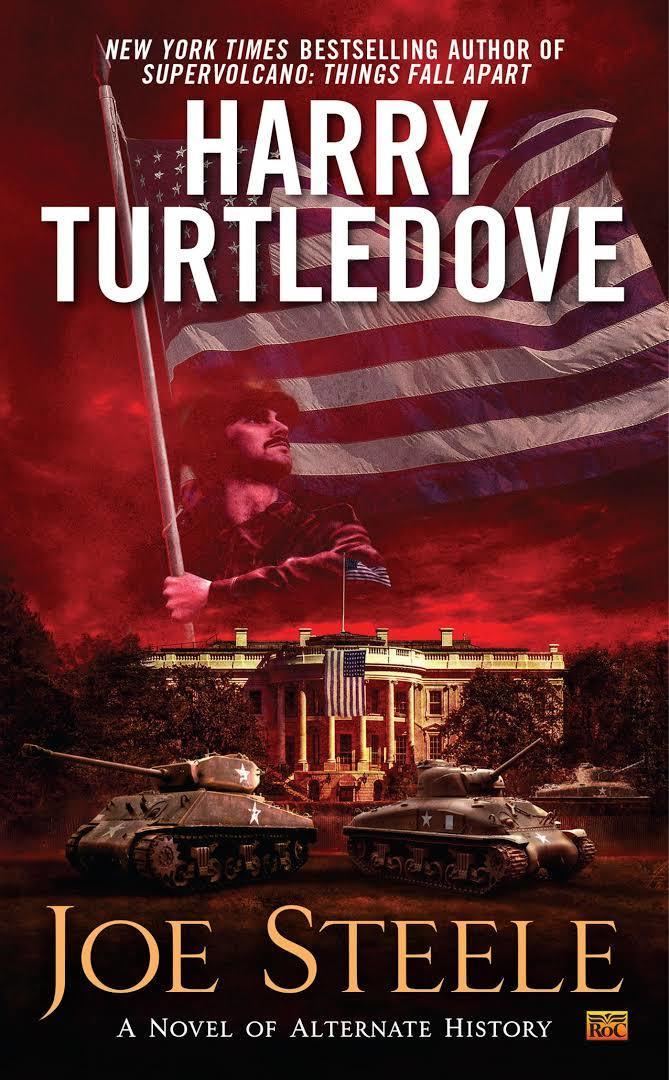7.4 /10 1 Votes7.4
Language English Publication date April 2015 Pages 438 pp Originally published April 2015 Genre Alternate history Country United States of America | 3.7/5 Goodreads Publisher ROC Books ISBN 978-0-451-47218-2 | |||||||||||||||||||||||||||||||||
 | ||||||||||||||||||||||||||||||||||
Nominations Locus Award for Best Short Story Similar Harry Turtledove books, Alternate history books, Other books | ||||||||||||||||||||||||||||||||||
Joe Steele is an alternate history novel by Harry Turtledove, first published by ROC Books/New American Library in hardcover and ebook form in April 2015. It is an expanded version of the author's 2003 short story of the same name.
The original concept comes from a line in Janis Ian's song "God and the FBI" which says "Stalin was a Democrat." In the foreword, Turtledove explains that from hearing this song, he began to imagine reasons for Stalin to be a Democrat, and the story grew from there. Janis Ian was an editor of the original short story, and is the dedicatee of the resulting novel.
Plot summary
The novel explores what might have happened had Joseph Stalin been raised in America, postulating his parents having emigrated to the United States a few months before his birth, instead of remaining in the Russian Empire. It depicts Stalin (in this history, taking the name Joe Steele) growing up to be an American politician, rising to the presidency and retaining it by ruthless methods through the Great Depression, World War II and the early Cold War. The president is depicted as having the soul of a tyrant, with Stalin's real world career mirrored by actions taken by Steele.
When Franklin D. Roosevelt is killed in a mysterious fire at the New York State Executive Mansion in Albany, New York along with his wife Eleanor, the Democratic Party has little choice but to nominate the up-and-coming Steele (a Congressman representing Fresno, California) as their candidate for the 1932 Presidential election. Steele would go on to defeat Republican incumbent Herbert Hoover in a landslide and becomes the 32nd President of the United States.
Rather than Roosevelt's New Deal plan, Steele implements the Four Year Plan, in lieu of Stalin's Five Year Plan, which entails massive infrastructure projects and the formation of the TVA, as in the actual timeline, but also the formation of prisoner work camps for the pseudo-enemies of the state, called wreckers. Roosevelt's attempt to pack the United States Supreme Court to pass more of his New Deal laws is mirrored by Steele's arrest of the dissenting Supreme Court Justices on charges of aiding foreign world powers, and has them executed. Additional political foes find similar charges leveled against them, including Senator Huey Long, who flees to his power base of Louisiana, but is assassinated regardless.
In this timeline, Leon Trotsky is left as Lenin's heir, but Hitler's rise in post-war Germany commences with the same rapidity as in the real world. When World War II in Europe begins, only grudgingly does Steele commit to help Winston Churchill and Trotsky with the Lend Lease Act. When Japan attacks the United States at Pearl Harbor in 1941, Steele sets up tribunals to demand answers from commanders General Short and Admiral Kimmel, and has them executed for incompetence. When the Philippines suffers much the same fate, Douglas MacArthur is evacuated to Australia and then the United States, whereupon he is additionally charged with incompetence. Furious, MacArthur denies all allegations but submits to execution to spare his family.
Minus MacArthur, the war follows much the same path as in the real world with the notable exception of the Manhattan Project, as Albert Einstein does not approach President Steele to propose an atomic bomb program. Without nuclear weapons, the Invasion of Japan sets the stage for the end of the Second World War, with American troops invading from the South and Soviet troops invading from the North. After Emperor Hirohito is killed in an air raid, the Japanese lose the will to fight and surrender. Japan is divided into North and South Japan while Kim Il-Sung rules the whole of Korea.
Evidence of German Nuclear testing, captured by the Western Allies near the end of the war, is brought to the attention of Steele, who demands answers from Einstein. Einstein states the potential for a weapon of enormous destructive power, but says he did not want such a weapon in the hands of Joe Steele. Steele has Einstein executed (along with J. Robert Oppenheimer, Enrico Fermi, and other colleagues), and the American Nuclear project hastily gets underway.
The Cold War between Trotsky and Steele heats up several years later in a Korean War-esque Japanese War between an invading Communist North and an unprepared South, which ends nearly on the same lines after a short nuclear exchange by the Americans and Soviets on opposite sides of North and South Japan in 1949. In 1952, Steele is elected to his sixth term in the presidency over Republican candidate Robert Taft with the morose Vice President John Nance Garner in tow.
On March 6, 1953, Steele dies from a stroke. Garner assumes the presidency of a shocked cabinet made up of Steele's cronies, and has virtually all of them removed. However, a newly courageous Congress impeaches Garner for the sins of Steele, and the Executive branch becomes vacant. In the political vacuum, GBI (Government Bureau of Intelligence) director J. Edgar Hoover assumes political control and becomes Director of the United States.
